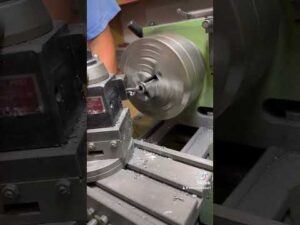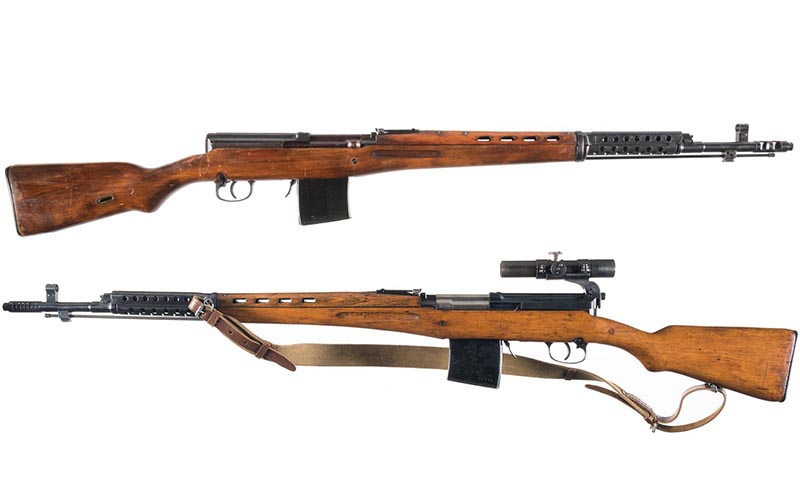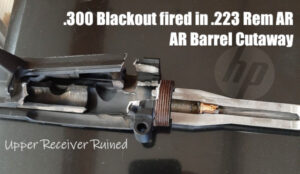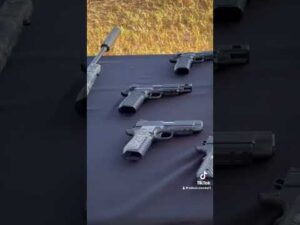The SVT-40, which is often overlooked, was one of the first battle rifles in the world and helped to establish the concept of full power self-loading rifles. Full-power battle rifles are the hallmark of the Cold War weapons used in the West after WWII. It’s easy to see why so many of these rifles were made. However, it also leads to lesser-known battle rifles being criminally ignored. The Soviet-made Selfloading Tokarev Rifle (or SVT-40) is one example. Despite being produced in excess of two million and extensive use during the Second World War, SVT-40 is still a historical anomaly that’s often overlooked by both Western battle rifles and other Soviet-made small arms. SVT-40. The Road to The SVT-40. The long and winding road that led the Soviets to adopt the SVT-40 was filled with characters. The USSR is not known for its technological ingenuity but the nation managed to innovate despite its economic disadvantage. This is especially true for small arms design. Ideas like the battle rifle or the intermediate caliber assault rifle were already explored long before NATO standards were established. The concept of battle rifles was new in the aftermath WWI. Many countries were interested in the idea and began to develop their own versions. However, only a few were able to see their efforts succeed. The USSR adopted the AVS-36, while the M1 Garand was adopted by America. Photo: Wikipedia. The timelines of the Soviet and American attempts to create a self-loading rifle are closer than one might think. Both countries began to work in the 1930s and had adopted a rifle after formally testing it by 1936. Both designs needed further development before they were finalized in 1940. However, Garand’s development was less difficult than the Russian’s. Sergei Simonov designed the AVS-36. It was very similar to the later SVT, but it had a different action that could fire semi- and fully-automatically. The second round of trials was held due to problems in the field. However, the SVT-38 was declared the winner. Photo:Rock Island Auction Company. Designed by Fedor Tokarev, of TT-33 fame. The SVT-38 would remain in service until the new SVT-40 model replaced. The Soviet political elite was involved in a debate about which rifle would go into full-scale production. This debate was dominated by politics and not merit. Although both the SVT and AVS were good rifles, there was much to be improved on. It was Tokarev’s personal relationship with Stalin that ultimately led to the triumph of his design. Stalin’s support for the SVT-38 led to the abandonment Simonov’s design, and full-scale production the new and improved SVT-40. The new design was simpler to produce, lighter, and offered a few quality of life improvements. However, the Soviets were unable to fully equip their entire armed forces with the revolutionary rifle after the invasion of 1941. The Americans were able continue to produce and issue Garand rifles but the Soviets were forced into reducing SVT-40 production to make more affordable guns like Mosin Nagants and PPSh-41s. It has a traditional wooden rifle stock with a pistol grip. It is fed by 10-round detachable boxes magazines. The SVT-40 is chambered for the 7.62x54R cartridge, which has been used in Russia since before Soviet Union. It uses a short-stroke gas piston with a tilting bolt operation. The German Gewehr 43 and possibly the FN-49 would also be influenced by this system. The SVT-40 was lighter than its predecessor, the M1 Garand and contained two more rounds of ammunition. However, the Garand was capable of faster reloads if used by a skilled user and was chambered to take a slightly stronger cartridge. The SVT was equipped with what we consider modern detachable magazines. However, spare magazines were not issued as they are with modern weapons. The SVT was designed to be reloaded from its top using two Mosin Nagant 5-round stripper clippers. Inserting a new magazine was reserved to be used in emergency situations. Both guns were great early battle rifles and loved by all who used them. The SVT-40 was more difficult to reload than the bolt-action Mosins, and Soviet conscripts complained about its design. However, the rifle’s strengths were evident in the hands better-trained troops. The SVT-40 was loved by all who were able to use it, whether they were Soviet marines or the Germans or Finns who captured thousands of them during the war’s early days. Photo: WikipediaAnother feature that the SVT 40 was well-received in the field was the low recoil impulse of the round it was chambered. Its muzzle brake, which effectively dampened recoil despite the rifle being only 8.5 pounds unloaded, was the main reason. The muzzle brake was later modified to be simpler and more efficient, with two vent holes. Rock Island Auction Company. The rifle’s low recoil inspired its designers to think it would make an effective automatic rifle, which led to the creation of the select-fire AVT-40. The project was abandoned soon after it began because the design was too fragile to withstand sustained fire. The automatic fire mode was not allowed on the AVT-40s that made it to the field. It was found that it reduced the gun’s lifespan too much. A short-barreled carbine variant of the SVT-40 was also produced. However, it was not long before the gun was banned from using the automatic fire mode. This was a much bigger failure than the attempt at making an automatic rifle. The stock material, barrel fitment, and stock material issues led to inconsistent cold-bore shot placement, and too much shot scatter after sustained fire. These were not acceptable qualities for a scoped precision rifle. The SVT-40 sniper idea was also abandoned in 1942. The SVT-40 was now an infantry battle rifle, despite having lost all its ambitions to become a sniper rifle or an automatic rifle. The SVT-40’s producers at Tula and Izhevsk were able to reduce manufacturing costs by not milling its scope rails. These rails are a way to date an SVT.SVT-40 variant. Photo by Rock Island Auction Company. Collecting the SVT-40Unfortunately, this SVT-40 is a rarer model of WWII surplus in the United States. In the 1950s, some Finnish-captured SVT-40s were imported. More were brought in from Russia during the 1990s. The mutual agreement between Russia, America and Russia prohibited any further importation of military arms. This resulted in the end of Russian SVT and SVD and other military rifle imports. The Mosin Nagant was an exception to this rule. This partly explains why the rifle is more common in the U.S. than other Russian small arms, and the fact that there were many more Mosins overall. Canada did not have an agreement with Russia. This resulted in many more SVTs ending their lives there than the U.S.Early SVT-40. Photo by Rock Island Auction Company. Most American SVT-40 owners don’t shoot them as often because of their rarity, high cost, and perceived fragility. Many people who have shot one say they enjoy them more than M1 Garands. It’s a shame that they aren’t available in greater numbers. These Soviet battle rifles would be loved by many more Americans if they were priced as in Canada. They have a lot to offer, aside from historical provenance. They can also go through a 7.62x54R spam can faster than a Mosin. Target grids and bullseye sizes can be found in MOA. Perfect for long-range shooting! Get free targets

















